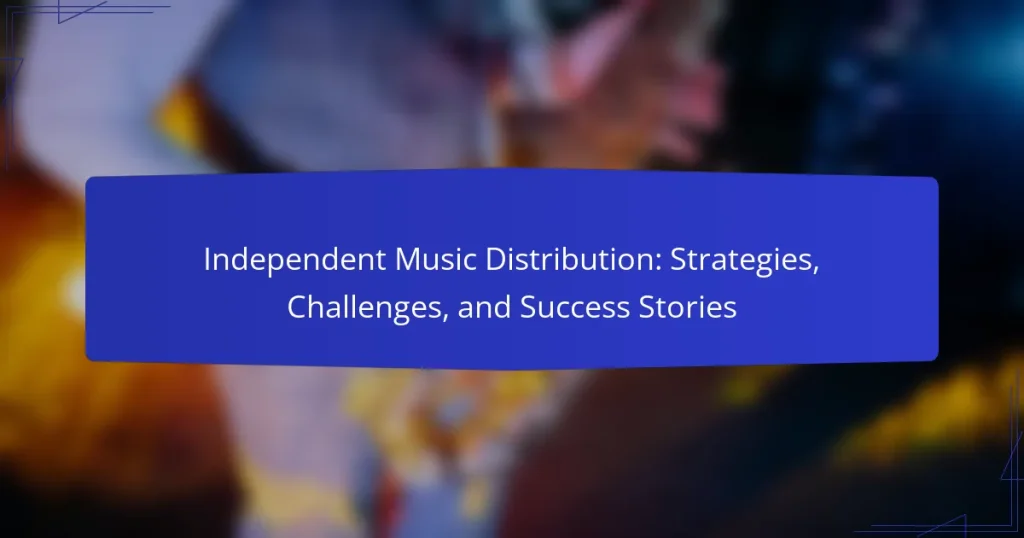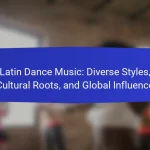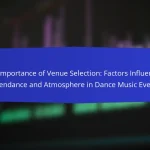Independent music distribution is the process through which artists distribute their music independently, without major record label support, enabling direct audience engagement via various platforms. This article explores the significance of independent distribution, highlighting its contribution to 40% of global recorded music revenues as reported by the International Federation of the Phonographic Industry. It covers successful independent artists like Chance the Rapper, OK Go, and Lizzo, illustrating how innovative distribution strategies and digital platforms can lead to commercial success. Additionally, the article provides practical strategies for independent artists, including optimizing digital distribution, leveraging social media, and collaborating with other artists to enhance visibility and reach.
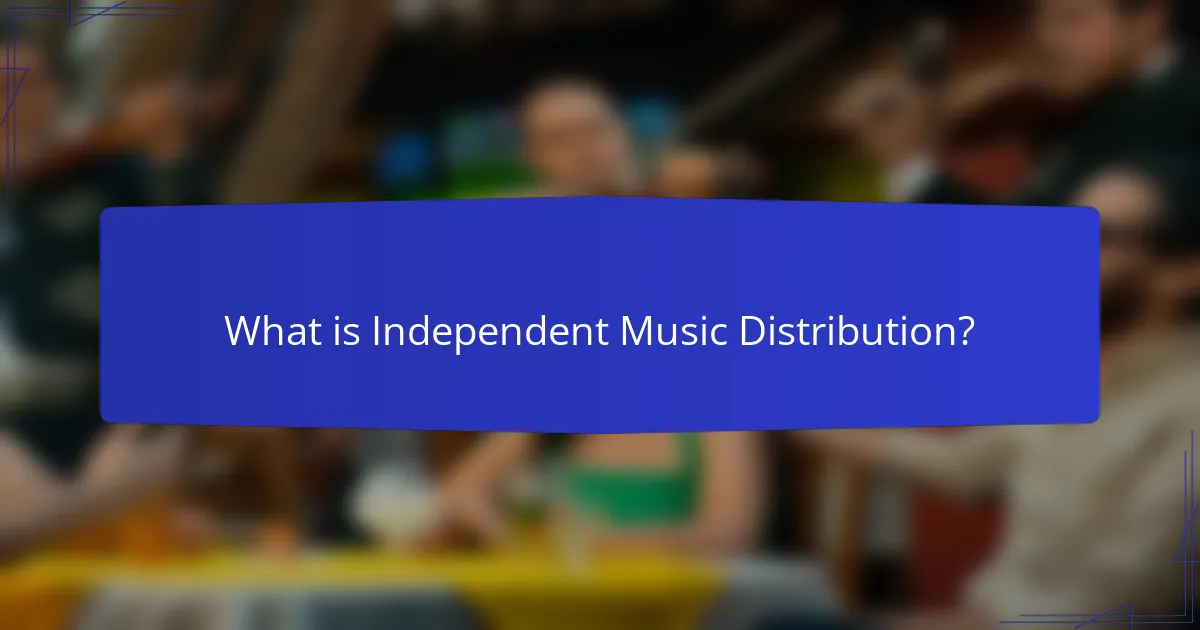
What is Independent Music Distribution?
Independent music distribution refers to the process by which independent artists distribute their music without the backing of major record labels. This distribution allows artists to reach audiences directly through various platforms. Independent distribution channels include digital platforms, physical sales, and social media. Artists often use services like TuneCore or CD Baby for digital distribution. This model empowers artists to retain more control over their music and profits. According to a 2021 report by the International Federation of the Phonographic Industry, independent labels accounted for 40% of global recorded music revenues. This statistic underscores the significance of independent music distribution in the modern music industry.
How does Independent Music Distribution function in the music industry?
Independent music distribution functions by enabling artists to release their music without relying on traditional record labels. Independent distributors provide services like digital distribution to streaming platforms and physical distribution to retail outlets. Artists can upload their music directly to these distributors. This process allows them to retain more control over their work and higher profit margins.
Independent distribution often involves platforms such as DistroKid, TuneCore, and CD Baby. These platforms charge fees or take a percentage of sales. They also offer additional services like marketing and analytics. This model democratizes music distribution, allowing diverse voices to reach wider audiences.
According to a report by the International Federation of the Phonographic Industry, independent labels accounted for 40% of global recorded music revenue in 2021. This statistic highlights the growing importance of independent music distribution in the industry.
What are the key components of Independent Music Distribution?
The key components of Independent Music Distribution include digital distribution, marketing support, royalty collection, and analytics. Digital distribution allows independent artists to release music on platforms like Spotify and Apple Music. Marketing support helps artists promote their music through social media and advertising. Royalty collection ensures artists receive payments for their streamed or purchased music. Analytics provide insights into listener demographics and engagement, helping artists refine their strategies. These components are essential for the success of independent artists in a competitive music landscape.
How do technology and platforms influence Independent Music Distribution?
Technology and platforms significantly influence independent music distribution by providing accessible tools for artists. Digital distribution platforms like DistroKid and TuneCore enable musicians to release their music globally. These platforms streamline the distribution process, allowing artists to bypass traditional record labels. Additionally, social media platforms enhance visibility and engagement with fans. Streaming services such as Spotify and Apple Music offer independent artists a chance to reach wider audiences. According to a 2021 report by the International Federation of the Phonographic Industry, independent labels accounted for 36.5% of global recorded music revenue. This demonstrates the growing impact of technology on music distribution. Overall, technology and platforms empower independent artists to control their distribution and reach.
What are the main strategies for Independent Music Distribution?
The main strategies for independent music distribution include utilizing digital platforms, building direct fan relationships, and leveraging social media. Digital platforms like Spotify and Apple Music allow independent artists to reach a global audience. Direct fan relationships can be established through email newsletters and fan clubs, fostering loyalty and engagement. Social media serves as a powerful tool for promotion and interaction, enabling artists to share content and updates. Additionally, independent artists often collaborate with other musicians to expand their reach. They may also consider using music distribution services like DistroKid or TuneCore for streamlined distribution. These strategies collectively enhance visibility and sales for independent musicians.
How can artists choose the right distribution platform?
Artists can choose the right distribution platform by evaluating their specific needs and goals. They should consider the platform’s reach and popularity among their target audience. Analyzing the fees and revenue splits is essential for financial sustainability. Artists must also review the platform’s features, such as promotional tools and analytics. Compatibility with streaming services and social media is crucial for broader exposure. Researching user reviews can provide insights into the platform’s reliability. Examining case studies of similar artists can help in making informed decisions. Ultimately, artists should select a platform that aligns with their brand and distribution strategy.
What marketing strategies enhance Independent Music Distribution efforts?
Effective marketing strategies for Independent Music Distribution include social media promotion, targeted email campaigns, and collaboration with influencers. Social media platforms like Instagram and TikTok allow artists to reach wider audiences. Targeted email campaigns help in building a loyal fanbase by providing exclusive content. Collaborating with influencers can amplify an artist’s reach and credibility. Research shows that artists who engage in social media marketing see a 30% increase in fan engagement. Additionally, using platforms like Bandcamp and SoundCloud can enhance visibility and sales directly. These strategies collectively strengthen an artist’s distribution efforts and market presence.
What challenges do independent artists face in music distribution?
Independent artists face several challenges in music distribution. They often struggle with limited financial resources. This restricts their ability to access professional distribution services. Additionally, independent artists lack industry connections. This makes it harder to gain visibility and reach larger audiences. Competition is intense in the digital music space. Many artists compete for attention on the same platforms. Moreover, independent artists may encounter difficulties with digital rights management. Protecting their work can be complex and costly. They also face challenges in marketing their music effectively. Without a label’s support, promotional efforts can be insufficient. Finally, understanding distribution platforms can be overwhelming. Each platform has different requirements and algorithms.
How do financial constraints impact Independent Music Distribution?
Financial constraints significantly impact Independent Music Distribution by limiting resources for marketing and promotion. Independent artists often struggle to allocate sufficient funds for distribution services. This lack of investment can result in reduced visibility on streaming platforms. Limited financial resources may also hinder the production quality of music. Lower production quality can affect the overall appeal of the music to potential listeners. Additionally, financial constraints restrict access to professional networking opportunities. Without these connections, independent artists may find it challenging to secure collaborations or performances. Overall, financial limitations can stifle growth and success in the independent music scene.
What role does competition play in the success of Independent Music Distribution?
Competition drives innovation and improves services in Independent Music Distribution. It encourages distributors to offer better pricing and unique features. As a result, independent artists benefit from more options and improved visibility. Competition also fosters partnerships and collaborations among distributors. This leads to increased market reach for independent music. According to a 2022 report by MIDiA Research, competition has led to a 30% increase in independent music revenue. Thus, competition is crucial for the growth and success of independent music distribution.
How can independent artists overcome distribution challenges?
Independent artists can overcome distribution challenges by utilizing digital platforms and social media effectively. Digital distribution services like DistroKid and TuneCore simplify music distribution to streaming platforms. These services often provide artists with greater control over their music and royalties. Utilizing social media for promotion helps artists reach wider audiences. Engaging with fans directly fosters a loyal following. Collaborating with other artists can also expand reach and visibility. Additionally, understanding analytics from streaming platforms can inform marketing strategies. These methods have proven effective for many independent artists in the industry.
What resources are available for independent artists to improve distribution?
Independent artists can utilize various resources to improve distribution. Digital distribution platforms like DistroKid, TuneCore, and CD Baby allow artists to distribute music to major streaming services. These platforms often provide user-friendly interfaces and affordable pricing structures. Social media platforms such as Instagram, Facebook, and TikTok also serve as powerful tools for promoting music. They enable artists to reach wider audiences and engage directly with fans. Additionally, music blogs and online publications can provide exposure through reviews and features. Collaborating with other artists can also enhance visibility and broaden distribution networks. Networking events and music conferences offer opportunities to connect with industry professionals.
How can networking enhance distribution opportunities for independent musicians?
Networking can significantly enhance distribution opportunities for independent musicians. By connecting with industry professionals, musicians can access valuable resources. These resources include distribution channels and promotional platforms. Networking also opens doors to collaborations with other artists. Collaborations can lead to shared audiences and increased visibility. Furthermore, relationships with distributors can facilitate better terms and conditions. Independent musicians can leverage these connections for wider reach. Statistics show that artists with strong networks often achieve higher sales and streaming numbers. Thus, effective networking is crucial for independent musicians seeking to expand their distribution.
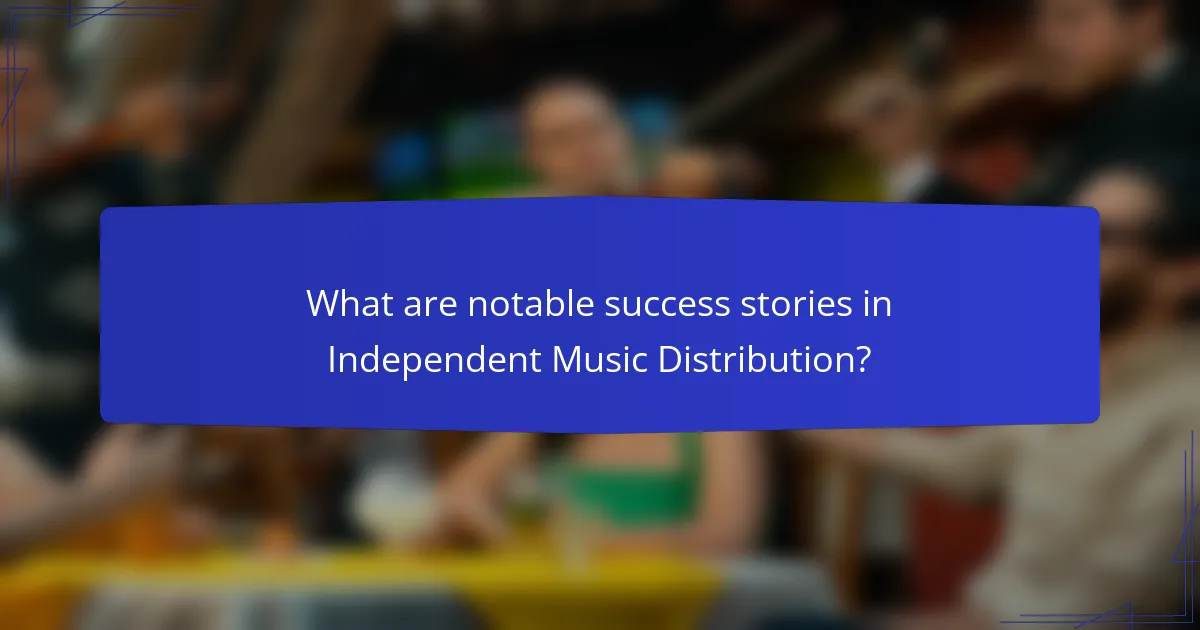
What are notable success stories in Independent Music Distribution?
Notable success stories in Independent Music Distribution include Chance the Rapper, who gained fame without a record label. He used platforms like SoundCloud and social media to distribute his music. His mixtape “Coloring Book” became the first streaming-only project to win a Grammy. Another example is the band OK Go, known for their innovative music videos. They leveraged YouTube for distribution, leading to significant commercial success and brand partnerships. Additionally, the artist Lizzo built her career through independent releases and strategic social media engagement, resulting in mainstream recognition. These examples illustrate how independent artists can achieve significant success through innovative distribution strategies.
Which independent artists have thrived through unique distribution strategies?
Independent artists who have thrived through unique distribution strategies include Chance the Rapper and Amanda Palmer. Chance the Rapper gained significant attention by releasing his music for free on platforms like SoundCloud. This strategy allowed him to build a loyal fanbase without the constraints of traditional record labels. Amanda Palmer successfully utilized crowdfunding through Patreon to finance her music projects. She engaged directly with her audience, creating a sustainable income stream while maintaining artistic control. Both artists demonstrate how innovative distribution strategies can lead to commercial success and artistic freedom.
What lessons can be learned from successful independent music campaigns?
Successful independent music campaigns demonstrate the importance of audience engagement. Engaging directly with fans fosters loyalty and builds a community around the music. Utilizing social media platforms effectively enhances visibility and outreach. For instance, artists like Chance the Rapper have leveraged platforms like Twitter and Instagram to connect with followers.
Moreover, strategic partnerships with other independent artists can amplify reach. Collaborations often introduce music to new audiences. Crowdfunding has proven successful for financing projects, allowing fans to invest in the artist’s vision. A notable example is Amanda Palmer, who raised over a million dollars through Kickstarter.
Finally, data analytics play a crucial role in understanding listener preferences. Monitoring streaming statistics helps tailor marketing strategies. These lessons underscore that creativity, community, and strategic planning are essential for success in independent music campaigns.
How do success stories illustrate the potential of Independent Music Distribution?
Success stories illustrate the potential of Independent Music Distribution by showcasing artists who thrive outside major label systems. For instance, Chance the Rapper gained widespread recognition through self-distribution of his music on platforms like SoundCloud. This approach allowed him to maintain creative control and connect directly with fans. Similarly, the band OK Go leveraged innovative music videos to promote their independently released tracks, gaining viral success. These examples highlight how independent distribution can lead to significant audience reach and financial success. According to a 2021 report by MIDiA Research, independent music accounted for 40% of global music revenue, underscoring its growing impact.
What common traits do successful independent artists share?
Successful independent artists share traits such as resilience, creativity, and business acumen. Resilience enables them to navigate challenges in the music industry. Creativity helps them develop unique sounds and engage audiences. Business acumen allows them to effectively market their music and manage finances. Additionally, successful independent artists often exhibit strong networking skills. They build relationships with other musicians, producers, and industry professionals. Commitment to continuous learning is also common among them. They adapt to industry changes and seek new opportunities. These traits collectively contribute to their success in a competitive landscape.
How can emerging artists apply these success stories to their distribution strategies?
Emerging artists can apply success stories to their distribution strategies by analyzing proven methods used by successful peers. They should study how established artists leverage social media to build their audience. For instance, artists like Chance the Rapper utilized platforms like SoundCloud to distribute music directly to fans. This approach bypasses traditional record labels, allowing for greater control and profit retention.
Additionally, emerging artists can adopt innovative marketing tactics seen in these success stories. Collaborating with influencers or other artists can expand their reach. Data shows that artists who engage with their audience through live streams and Q&A sessions see increased fan loyalty.
Furthermore, understanding the importance of analytics is crucial. Successful artists often track listener demographics and engagement metrics to refine their strategies. This data-driven approach can help emerging artists identify their target audience and tailor their distribution accordingly.
In summary, emerging artists can enhance their distribution strategies by learning from the marketing techniques, direct-to-fan models, and analytical practices demonstrated in the success stories of established musicians.
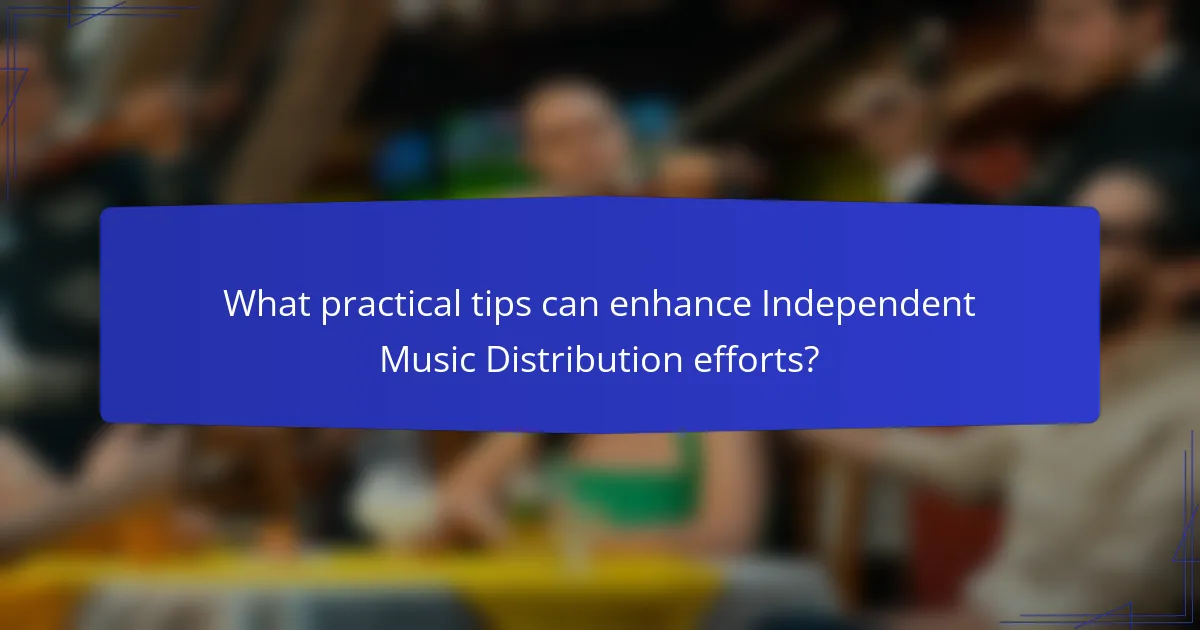
What practical tips can enhance Independent Music Distribution efforts?
Utilize digital distribution platforms to reach a wider audience. Services like DistroKid and TuneCore can distribute music to multiple streaming services. Optimize your metadata for better discoverability. Accurate genre tags and descriptions enhance searchability on platforms. Leverage social media for promotion. Engaging with fans on platforms like Instagram and TikTok can boost visibility. Collaborate with other independent artists. This can expand your reach and introduce you to new audiences. Regularly analyze your performance metrics. Understanding listener data helps refine your distribution strategy. Create compelling visuals and branding. High-quality artwork and consistent branding attract more listeners. Engage with music blogs and influencers. They can help promote your music to their established audiences.
How can artists effectively promote their music post-distribution?
Artists can effectively promote their music post-distribution by utilizing social media platforms. Engaging with fans through Instagram, Twitter, and Facebook increases visibility. Regularly posting updates, behind-the-scenes content, and live performances keeps audiences interested. Collaborating with influencers can expand reach to new listeners. Utilizing music streaming services’ promotional tools also enhances discoverability. Email marketing campaigns inform subscribers about new releases and events. Hosting virtual events or live streams creates interactive experiences for fans. Additionally, submitting music to playlists can significantly boost plays and exposure. These strategies are supported by data showing that social media marketing can increase music sales by up to 30%.
What are the best practices for engaging with audiences after distribution?
Engaging with audiences after distribution involves several best practices. First, actively respond to audience feedback across platforms. This builds a connection and shows appreciation. Second, share behind-the-scenes content to create a personal touch. This enhances relatability and keeps the audience invested. Third, utilize social media for real-time interactions. Engaging in conversations can increase loyalty and interest. Fourth, host live Q&A sessions to foster direct communication. This encourages participation and strengthens community ties. Fifth, analyze engagement metrics to understand audience preferences. This data can inform future content strategies. Implementing these practices can lead to sustained audience engagement and growth.
How can feedback be utilized to improve future distribution efforts?
Feedback can be utilized to improve future distribution efforts by identifying gaps in the current process. Analyzing feedback helps in understanding artist and consumer experiences. It allows for adjustments in distribution strategies based on specific needs. For instance, if artists report delays, addressing logistics can enhance efficiency. Feedback can also highlight successful channels, guiding future marketing efforts. Regularly reviewing feedback fosters a culture of continuous improvement. According to a study by the Harvard Business Review, organizations that actively seek feedback can increase their operational efficiency by up to 30%. This data supports the idea that feedback is crucial for optimizing distribution efforts.
Independent Music Distribution refers to the process through which independent artists distribute their music without major label support, allowing them direct access to audiences via digital platforms, physical sales, and social media. The article covers the functioning of independent distribution in the music industry, key components such as digital distribution and marketing support, and the impact of technology and competition on distribution success. It also addresses the challenges faced by independent artists, strategies for effective distribution, and notable success stories that illustrate the potential of this model. Additionally, practical tips for enhancing distribution efforts and engaging with audiences post-distribution are provided.
